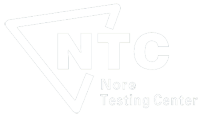|
|
Domestic sewage testingDomestic sewage is the waste water discharged in the daily life of residents. It mainly comes from residential buildings and public buildings, such as houses, offices, schools, hospitals, shops, public places and industrial enterprises toilets. The pollutants contained in domestic sewage are mainly organic matter (such as protein, carbohydrate, fat, urea, ammonia nitrogen, etc.) and a large number of pathogenic microorganisms (such as parasite eggs and intestinal infectious virus, etc.). The organic matter in domestic sewage is extremely unstable and easily decomposes to produce foul smell. Bacteria and pathogens multiply by taking organic matter in domestic sewage as nutrients, which can lead to the spread of infectious diseases. Therefore, domestic sewage must be treated before it is discharged. In the process of sewage treatment, the quality of sewage needs to be tested and analyzed first, mainly by detecting the data of SS, COD, BOD, etc. in the water, to have a correct water quality test data for the quality of the raw water, and then through different sewage treatment methods, Then compare the treatment effects of the treated water quality. Common domestic sewage testing items PH: pH is actually a way of expressing the acidity and alkalinity in the aqueous solution. The application range of pH is between 0-14, when pH=7, the water is neutral; when pH<7, the water is acidic, the smaller the pH, the greater the acidity of the water; when the pH>7, the water is alkaline, and the pH The greater the alkalinity of the water. Chroma: Generally pure natural water is clear and transparent, that is, colorless. However, sewage with colored pollutants such as metal compounds or organic compounds has various colors. Dilute the colored sewage with distilled water and compare it with the reference water sample, until the color difference of the two water samples is the same. At this time, the dilution factor of the sewage is its chromaticity. TS: Abbreviation of total solid, the residual amount of water sample after evaporation and drying, the total amount of solid matter remaining when the water sample is evaporated to dryness at 105-110°C. The mass of dissolved matter is equal to the mass of evaporated residue minus suspended matter. SS: Suspended solids, general unit mg/L. Generally refers to: the water sample should be filtered with filter paper, and the solid mass after the filtered residue is dried at a temperature of 105°C to a constant weight. COD: Chemical oxygen demand, general unit mg/L. The principle of COD measurement is to use a strong oxidant (potassium dichromate is legally used in my country) to oxidize organic matter into CO2 and H2O under acidic conditions, which is called chemical oxygen demand. Use CODCr, generally expressed in COD. Advantages of COD: It can accurately indicate the content of organic matter in sewage, and the measurement time only takes a few hours, and it is not affected by water quality. The greater the chemical oxygen demand, the more serious the water body is polluted by organic matter. BOD: Biochemical oxygen demand, general unit mg/L. The amount of dissolved oxygen consumed by the decomposition of organic pollutants by microorganisms. NH3-N: ammonia nitrogen, general unit mg/L. Ammonia nitrogen refers to nitrogen in the form of free ammonia (NH3) and ammonium ions (NH4+) in water. TP: total phosphorus, the general unit is mg/L. Phosphorus compounds in sewage can be divided into organic phosphorus and inorganic phosphorus. The number of coliforms: is the number of coliforms contained in each liter of water sample, counted in units/L. The total number of bacteria: it is the total number of coliforms, pathogenic bacteria, viruses and other bacteria, expressed by the total number of bacterial colonies per milliliter of water sample. Fecal coliforms, animal and vegetable oils, petroleum, anionic surfactants, color, volatile phenol, total cyanide, total mercury, total cadmium, total chromium, hexavalent chromium, total arsenic, total lead, total silver, total Residual chlorine, etc. Which industries need domestic sewage monitoring? 1. Industrial enterprises: electroplating plants, bean products plants, garbage leachate, pharmaceutical plants, paper mills, tannery, coking plants, metallurgical plants and other industrial production and hospitals, slaughterhouses, breeding plants and other industries 2. Reuse of reclaimed water 3. Car cleaning etc. |






